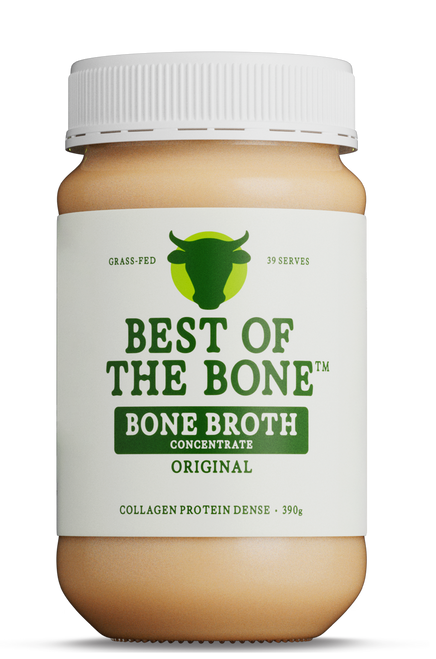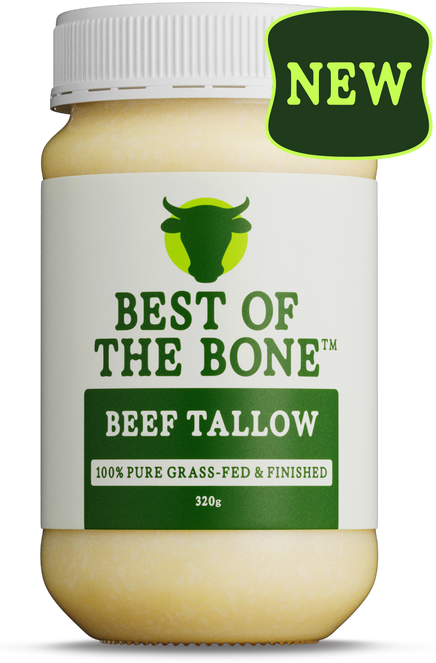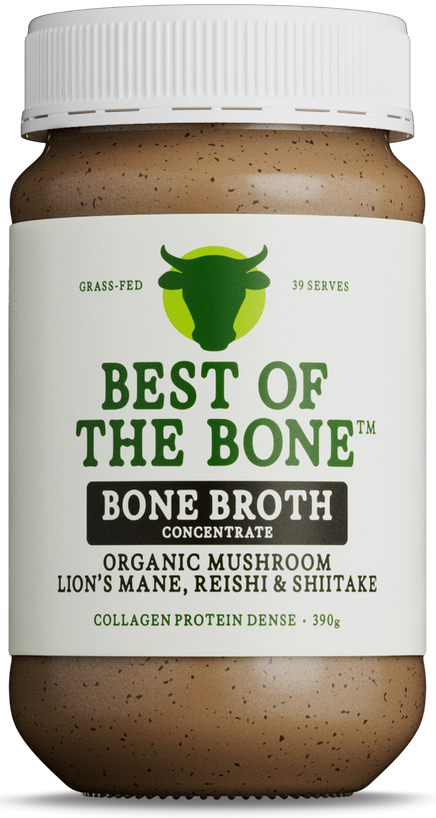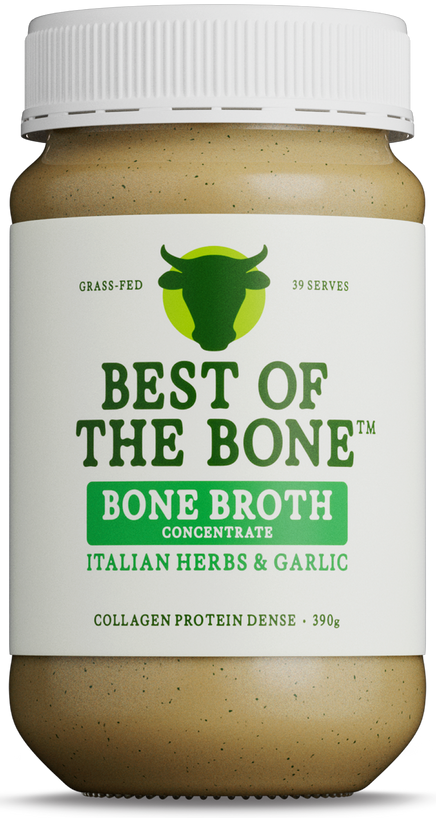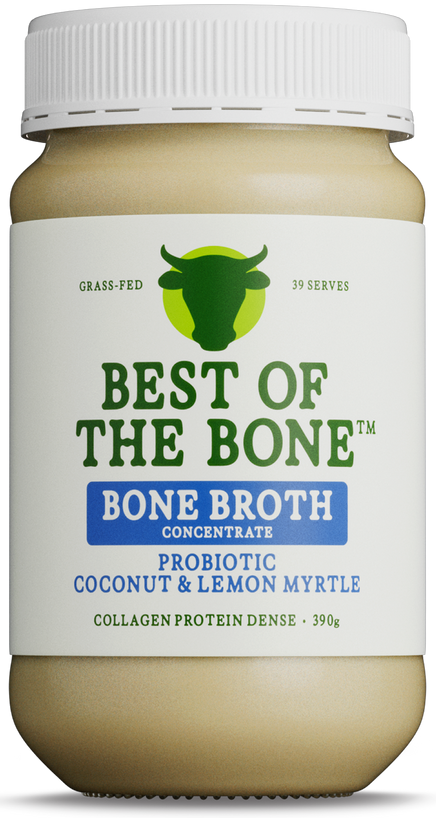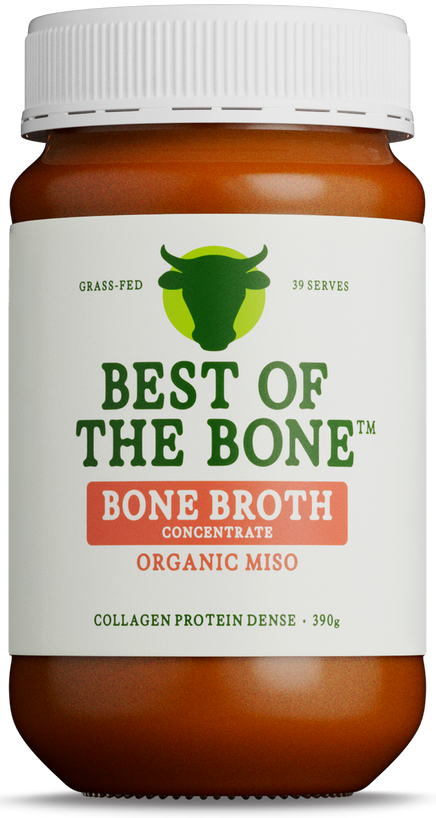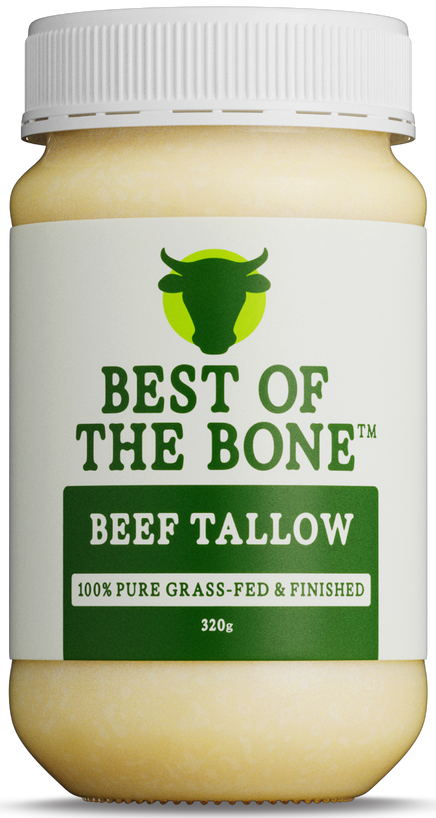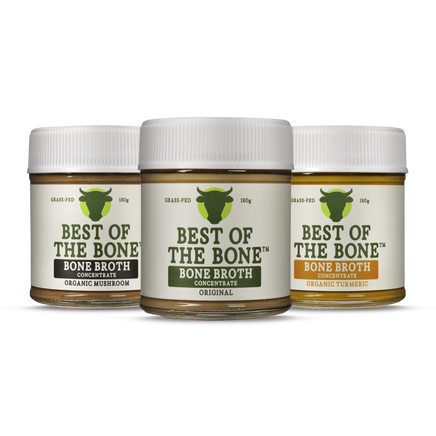The Surprising History of Bone Broth: From Prehistoric Times to Modern Wellness
Bone broth might seem like the latest health food trend, but this nutritional powerhouse has nourished humans for millennia.
Recorded throughout later history on every continent. In Japan it is known as "Osumashi", in Korea "Gomtang", Italy as "Brodo", Spain as "Caldo" and France as "Bouillon.” Clearly cultures worlds apart saw the same benefits in consuming this golden broth.
Let's take a flavorful journey through time and discover how this humble elixir became the wellness superstar it is today.
Prehistoric Roots: The Original "No Waste" Food
Imagine our early ancestors huddled around a fire, having just brought down a large animal. In a world where every calorie counted, wasting any part of their hard-earned meal was unthinkable. Enter the ingenious solution: bone broth.
These resourceful hunter-gatherers would use the entire animal, including bones, marrow, and connective tissues. They discovered that simmering these parts in water for long periods extracted a wealth of nutrients and created a satisfying, energy-rich broth.
Fun fact: Before the invention of pottery, some cultures would use the animal's stomach as a cooking vessel, dropping heated stones into it to create a primitive "hot pot"!
Ancient Healing Traditions: East Meets West
As civilizations developed, bone broth found its place in traditional medicine systems around the world:
Traditional Chinese Medicine (TCM)
In TCM, bone broth has been used for centuries to support kidney health, boost the immune system, and nourish the "Jing" – the essence that governs growth, development, and reproduction. Different animal bones were used for specific health concerns, showcasing an early understanding of food as medicine.
Ancient Greek Medicine
The famous Greek physician Hippocrates, often called the father of modern medicine, was a big proponent of bone broth. He recommended it for digestive issues and as part of the healing process for various ailments.
Middle Ages to Renaissance: Broth as a Staple
During the Middle Ages, bone broth (often called "stock") became a kitchen staple across Europe. It was valued not only for its nutritional properties but also as a way to stretch limited food resources.
Peasant food: Bone broth allowed poorer families to extract maximum nutrition from cheaper cuts of meat and bones.
Monastery kitchens: Monks were often at the forefront of culinary innovation, perfecting slow-cooking techniques for broths and stews.
The first restaurants: In 16th century France, establishments called "restaurants" (meaning "restoratives") began serving bone broth as a cure for exhaustion.
Industrial Revolution: The Birth of Portable Soup
As exploration and long-distance travel became more common, the need for portable, long-lasting nutrition grew. Enter "portable soup" – a concentrated bone broth that was dehydrated into a thin, lightweight cake. This early version of bouillon could be easily reconstituted with hot water.
British Navy: Portable soup became a standard ration, helping prevent scurvy on long voyages.
Lewis and Clark: The famous American explorers carried portable soup on their expedition across North America.
19th Century: The Rise of Culinary Science
The 19th century saw a deeper scientific understanding of nutrition and cooking techniques:
Extraction of gelatin: In the early 1800s, the process for extracting pure gelatin from bones was developed, leading to a better understanding of bone broth's components.
Justus von Liebig: This German chemist studied the nutritional value of bone broth, leading to the creation of beef extract and bouillon cubes.
20th Century: Convenience Takes Over
The 20th century brought significant changes to how we consume bone broth:
- Canned and powdered broths: Mass production made broth more convenient but often at the cost of quality and nutrition.
- MSG: The discovery of monosodium glutamate led to its widespread use in commercial broths to enhance flavour.
- Fast food culture: Home-cooked broths fell out of favour as busy lifestyles demanded quicker meal solutions.
The Modern Resurgence: Rediscovering Liquid Gold
In recent years, there's been a renewed interest in traditional foods and their health benefits. Bone broth has experienced a major comeback, celebrated for its:
- Gut-healing properties
- Joint support
- Skin, hair, and nail benefits
- Immune-boosting potential
This resurgence has led to innovations like our Best of the Bone concentrates, which combine traditional wisdom with modern convenience.
The Science Behind the Tradition
Modern research is catching up with what our ancestors intuitively knew. Studies have shown that bone broth:
- Contains beneficial amino acids like glycine and proline
- Provides easily absorbable minerals
- Supports joint health through glucosamine and chondroitin
- Supports reducing chronic inflammation
Best of the Bone: Honoring Tradition, Embracing Innovation
At Best of the Bone, we're proud to be part of bone broth's rich history. Our products combine time-honored slow-cooking methods with modern nutritional science:
- We use only the highest quality, grass-fed Australian and NZ whole beef bones
- Our slow-cooking process extracts maximum nutrients
- We offer convenient concentrates that make it easy to incorporate bone broth into your daily routine
- Our flavoured varieties, like Organic Turmeric, Ginger & Black Pepper or Organic Miso, add functional benefits to traditional broth
The Future of Bone Broth
As we look to the future, bone broth continues to evolve:
- Sustainability focus: Using all parts of the animal aligns with modern eco-conscious values
- Functional add-ins: Herbs, spices, and superfoods enhance broth's natural benefits
- Personalized nutrition: As we learn more about individual nutritional needs, customized bone broth formulas may emerge
Bringing It Full Circle
From prehistoric caves to modern kitchens, bone broth has stood the test of time. Its journey reflects our evolving relationship with food, nutrition, and healing. By embracing this ancient superfood, we're not just following a trend – we're connecting with a tradition as old as humanity itself.
The next time you sip a mug of Best of the Bone broth, take a moment to appreciate the rich history in your hands. You're not just nourishing your body; you're participating in a culinary legacy that spans millennia. Here's to the past, present, and future of this remarkable elixir!

